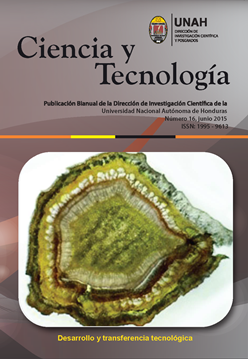Comparison of three salinities to assess the population growth of the microalgae Chaetoceros muelleri
DOI:
https://doi.org/10.5377/rct.v0i16.2178Keywords:
post-larval shrimp, algae, salinityAbstract
In the southern region of Honduras there are eight laboratories producing 6,400 million post-larval shrimp per year, microalgae are used as live food in raising post-larval shrimp, for growth potential and nutritional value, spice preference is the Chaetocera muelleri. The laboratories manage their own protocols for mass cultivation of microalgae adapted from other countries and ignore the effect of salinity to optimize the growth of the microalgae Chaetoceros muelleri. The aim of the study was to compare three salt concentrations to determine the effect of salinity on the growth of microalgae and find a statistical model to help predict populations of microalgae. The study was conducted in a laboratory production of post-larval shrimp community Cedeño, Choluteca. Salinity three concentrations (7000, 20000 and 34000 ppm) as culture medium were used at a density of 470,000 cells / cm3 inoculum and harvesting the fourth day after seeding, 108 experimental units were analyzed. The highest growth of microalgae develops 20,000 ppm of salt to the average density of 3.85x106 cells / cm3, salinity of 7000 ppm microalgae growth was the lowest. It is possible to predict populations of microalgae using a model of reliable relationship (R2 = 0.91) helping to optimize operation processes for producing post-larval shrimp.
Revista Ciencia y Tecnologia No. 16, Junio 2015: 36-49
Downloads
1385
Downloads
Published
How to Cite
Issue
Section
License
© Revista Ciencia y Tecnología
Authors who publish in this journal accept the following conditions: In accordance with the legislation of copyright, Revista Ciencia y Tecnología, recognizes and respects the moral right of authors, as well as the ownership of the patrimonial right, which will be ceded to the magazine for its diffusion in open access in printed version and in digital format. By being part of multiple indexers, databases and reference systems, the articles published by Revista Ciencia y Tecnología will be visible and will be downloaded from these websites, indicating, in all cases, the authorship of the articles, the date of publication and the number of the journal to which they correspond.




